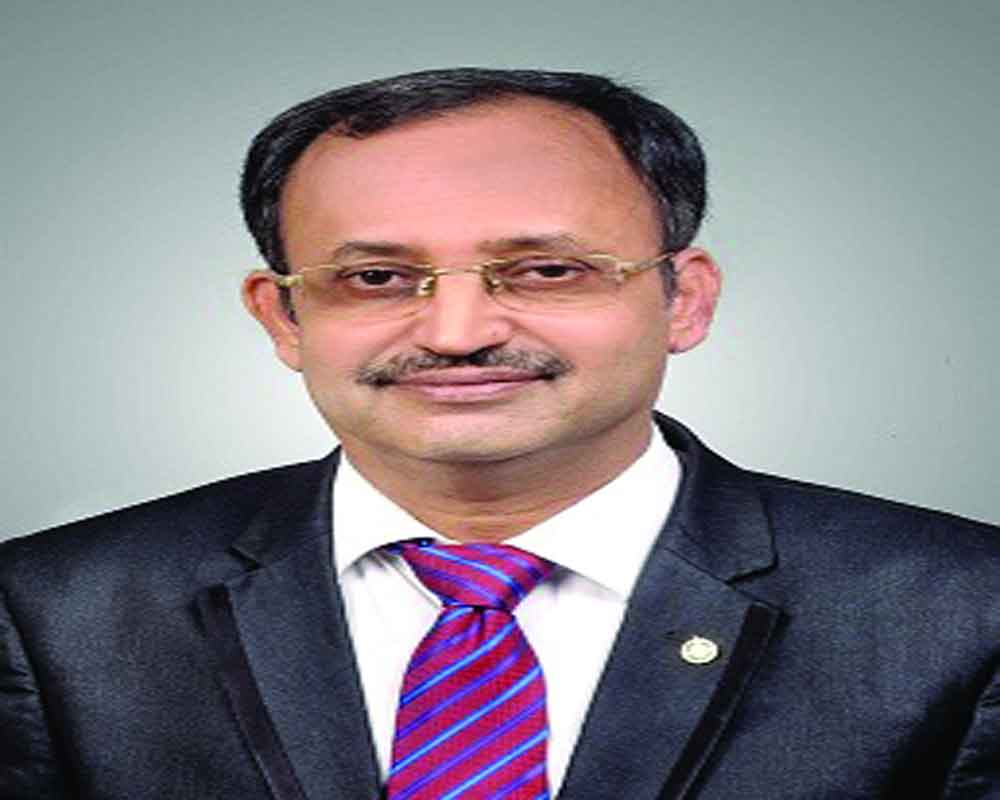"Act now. Act together. Invest in Neglected Tropical Diseases," is the theme of this year’s World Neglected Tropical Diseases (NTDs) Day being observed on January 30. The Day is also marked as World Leprosy Day. NTDs is an umbrella term that refers to 20 medically diverse, communicable diseases. India is home to the world’s largest absolute burden of at least 11 major NTDs viz. Ascariasis, Hookworm, Trichuriasis, Dengue, Lymphatic filariasis, Trachoma, Cysticercosis, Leprosy, Cystic echinococcosis, Visceral leishmaniasis or Kala-azar and Rabies. Dr Ramesh Bhat M, well known dermatologist, Vice Dean, FMCC, Mangalore writes for THE HEALTH PIONEER, exclusively focusing on status and elimination progress in leprosy which remains mired with stigma and a scourage for the poor.
Leprosy, a neglected tropical disease (NTD) caused by Mycobacterium leprae, is at least 4,000 years old, making it one of the oldest diseases known to humanity. The transmission occurs through respiratory droplets. Overall, the risk of getting Hansen's disease for any adult around the world is very low. That's because more than 95% of all people have natural immunity to the disease. Prolonged, close contact with someone with untreated leprosy over many months is needed to catch the disease. Due to the slow-growing nature of the bacteria and the long time it takes to develop signs of the disease, it is often very difficult to find the source of infection. When the disease occurs, it mainly affects the skin, the peripheral nerves, mucosa of the upper respiratory tract, and the eyes. Leprosy is curable with a combination of antibiotics known as Multi Drug Therapy (MDT), available for free across the world. If left untreated, it could lead to disabilities in a small proportion of patients. Visible deformities are one of the leading causes of stigma affecting health-seeking behaviour and social inclusion.
In India and the rest of the world, there has been a tremendous decline in the number of leprosy patients over the past four decades. This was possible due to various elimination programs launched by WHO and the national programs of respective countries. However, one of the major challenges faced by India and other countries like Brazil, Indonesia, Ethiopia, Nepal, Nigeria is the continued occurrence of new leprosy cases.
These countries reported more than 1,000 new cases of Hansen's disease to WHO in 2021-22; Brazil(22,476), Indonesia(12,316), Ethiopia (3,010), Nepal (2,418) Nigeria(1000). Leprosy is endemic in several states and union territories of India, with the annual case detection rate of 4.56 per 10 000 population. The prevalence rate of leprosy is 0.4 per 10,000 population in India. The WHO epidemiological report of 2020-2021 mentions that out of 1,40,546 new cases reported globally, 6 1 6 7 8 (4 3. 8 %) are contributed by India. Maharashtra alone recorded more than 12,000 cases during the same time period. Of the new cases detected during 2020-2021, 58.1% were multibacillary, 39% were women, 5.8% were children less than 14 years of age, and 2.41% had visible deformities. The rate of visible deformities was 1.1 per million population.
However, there has been a massive drop in detection due to pandemic. One of the important factors for it could be the hurried declaration that India had reached the leprosy "elimination" target in 2005, which led to a false sense of security, loss of focus, and to erosion of expertise among program planners and healthcare professionals.
According to National Sample Survey and situational analysis done in 2015 by National Leprosy Eradication Programme (NLEP), India, the major issues to be addressed by the program were delay in case detection, hidden caseloads, low awareness regarding leprosy in the community, and the lack of quality monitoring. In addition, in India, there are more than 3 million people with leprosy deformities needing attention and care. The postelimination annual NCDR was far higher than what is expected in certain states and blocks compared to the national average. It is very high in a few states such as Chhattisgarh (16.2/100,000 population), Bihar, Jharkhand, and Odisha. High NCDR appears to be due to continued transmission of the disease, evidenced by >50% multibacillary cases and more than 9% child leprosy rate in new cases detected in states/union territories (UTs) of India. These trends indicate that despite the successful implementation of MDT, the transmission of leprosy in India is still a matter of concern.
After 40 years of strategies based almost entirely on early diagnosis and treatment with MDT, it is clear that there is a need to find additional tools to interrupt transmission, while continuing the efforts for vigorous new case finding.
Targets Under Sustainable Development Goals are 2021-22 are: • Reduce the prevalence rate from 0.2 to < 0.6/ million • Rate of child case with zero disability to be sustained • Reduce the rate of Grade 2 deformity (visible deformity) from 1.2/million to < 1/million Under Sustainable Development Goal, Government of India is committed to eradicate Leprosy by 2030. The State Government is targeted to eradicate Leprosy by 2025-26. World Leprosy Day is observed on the last Sunday of January every year. This international day is an opportunity to celebrate people who have experienced leprosy, raise awareness of the disease, and call for an end to l e p r o s y - r e l a t e d stigma and discrimination.
This year's theme "Act Now. End Leprosy" calls attention to three key messages: 1. Elimination is possible: We have the power and tools to stop transmission and defeat this disease. 2. Act now: We need the resources and commitment to end leprosy. Prioritize leprosy elimination. 3. Reach the unreached: Leprosy is preventable and treatable. Suffering from leprosy is needless.


























